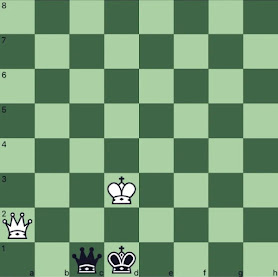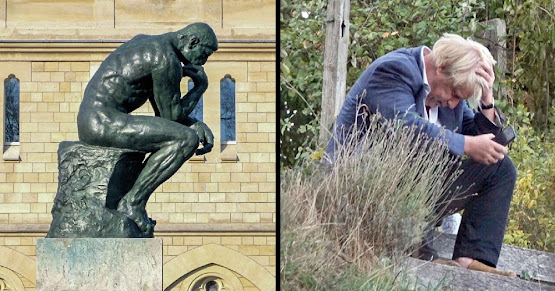Lectern (pronounced lek-tern)
(1) A reading desk
in a church on which is placed the Bible and from which lessons are read (as a lection) during
a church service.
(2) A stand (usually with a slanted top), used to hold a
book, papers, speech, manuscript, etc, sometimes adjustable in height to suit
the stature of different speakers.
1400s: From the late Middle English lectryn, from the Middle English lectron, lectrone and the early fourteenth century lettorne & letron, from the Middle French letrun, from the Old French leitrun & lettrun, from the Medieval Latin lēctrīnum from the Late Latin lēctrum (lectern), from lectus (from which English gained lecture), the construct being the Classical Latin leg(ere) (to read) (or legō (I read, I gather)) + -trum (the instrumental suffix). The Latin legere (to read (literally "to gather, choose") was from the primitive Indo-European root leg- (to collect, gather) which begat derivatives meaning "to speak” (in the sense of “to pick out words”). In linguistics, the process by which in the fifteenth century the modern form evolved from the Middle English is called a partial re-Latinization. The related noun lection was from the Old French lection, from the Latin lēctiōnem, a form of lēctiō, again from legō. A long obsolete meaning was “the act of reading” but it endured in ecclesiastical use in the sense of (a reading of a religious text; a lesson to be read in church etc (ie the idea of something read aloud from a text “sitting on the lectern” as opposed to sermons and such, delivered from the pulpit). It was a doublet of lesson. The noun & vern lecture (something often delivered from a lectern comes from the same Latin source. Lectern is a noun; the noun plural is lecterns.
Crooked Hillary Clinton (in pantsuits), on the podium, behind the lectern, during her acclaimed lecture tour “The significance of the wingspan in birds & airplane design”.
Some words are either confused with lectern or used interchangeably and in one case there may have been a meaning shift. In English use, a lectern was originally a stand on which was placed an open Bible. Made usually either from timber or brass (depending on the wealth or status of the church), they were fashioned at an angle which was comfortable for reading and included some sort of ledge or stays at the bottom to prevent the book sliding off. A pulpit (inter alia "a raised platform in a church, usually partially enclosed to just above waist height)" was where the minister (priest, vicar, preacher etc) stood when delivering the sermon and in many cases, there were lecterns within pulpits. Pulpit was from the Middle English pulpit, from the Old French pulpite and the Latin pulpitum (platform). Podium (inter alia "a platform on which to stand; any low platform or dais") was a general term for any raised platform used by one or more persons. A lectern might be placed upon a podium and in an architectural sense most pulpits appear on a permanent structure which is podium-like although the term is not part of the language of traditional church architecture. Podium was from the Latin podium, from the Ancient Greek πόδιον (pódion) (base), from the diminutive of πούς (poús) (foot) and was an evolution of podion (foot of a vase).
Behind what is now the world’s best known lectern, Karoline Leavitt (b 1997; White House Press Secretary since 2025) responds to a question.
In formal settings, the US use often prefers podium and one of the world's more famous podiums is that used for the White House's press briefings, a place that has proved a launching pad for several subsequent, usually lucrative, careers in political commentary. Some press secretaries have handled the role with aplomb and some have been less than successful including Donald Trump's (b 1946; US president 2016-2021 and since 2025) first appointee Sean Spicer (b 1971; White House Press Secretary & Communications Director 2017), whose brief, not always informative but often entertaining tenure was characterized as "weaponizing the podium", memorably parodied by the Saturday Night Live crew.
A
dais (inter alia "a raised platform in a room for a high table, a seat of
honor, a throne, or other dignified occupancy, such as ancestral statues or a
similar platform supporting a lectern or pulpit") is for most practical
purposes a podium and thus often effectively a synonym although dais probably
tends to be used of structures thought more grand or associated with more
important individuals (dead or alive).
There's also a literature detailing support of or objections to the
various pronunciations (dey-is, dahy-is
& deys-s), most of which are
class or education-based. Dais was from
the Middle English deis, from the
Anglo-Norman deis, from the Old
French deis & dois (from which modern French gained dais), from the Latin discum, accusative singular of discus (discus, disc, quoit; dish) and
the Late Latin discum (table), from
the Ancient Greek δίσκος (dískos)
(discus, disc; tray), from δικεῖν (dikeîn),(to cast, to throw; to strike). It was cognate with the Italian desco and the Occitan des.
A rostrum (inter alia "a structure used by dignitaries,
orchestral conductors etc") is really a lectern with a built in dais. It's thus an elaborate lectern. Rostrum was a learned borrowing from the
Latin rōstrum (beak, snout), the
construct being from rōd(ō) (gnaw) + -trum, from the primitive Indo-European rehd- + -trom. The early uses were in zoology (beak, snout
etc) and naval architecture (eg the prow of a warship), the use in sense of lecterns
a back-formation from the name of the Roman Rōstra,
the platforms in the Forum from which politicians delivered their speeches (the
connection is that the Rōstra were
decorated with (and named for) the beaks (prows) of ships famous for being
victorious in sea battles.
The ups and downs of the greasy pole: 10 Downing Street's prime-ministerial lectern. The brace of cast iron fittings on the doorstep were there so people could scrape the mud and muck from the soles of the boots before entering the house. They were in the eighteenth and nineteenth centuries a common sight because, like most cities, London’s streets often were an agglomeration of dirt, mud, horse shit and worse. These days marketing departments would conjure up enticing product names for the things but commerce used to be punchier and, unambiguously, they were advertised variously as “boot scrapers”, “door scrapers”, “shoe scrapers” or “scraper irons”. Paved streets mean the fittings are now mostly redundant although Number 10 has seen many "boot lickers" (one or two rewarded with a life-peerage and seat in the House of Lords). Unlike a few recent prime ministers, the boot scrapers have proved durable.
The Times of London published a hexaptych noting the evolution of the prime-ministerial lectern which has become a feature of recent British politics, especially since the increase in the churn-rate. Whether any psychological meaning can be derived from the style of the cabinet maker’s craft is debatable although some did ponder the use of a dark stain for Boris Johnson (b 1964; UK prime-minister 2019-2022) and the twisted plinth of that made for Liz Truss (b 1975; UK prime-minister Sep-Oct 2022). The Times did however note a few things including the modest origins of the concept in the lecterns used by Tony Blair (b 1953; UK prime-minister 1997-2007) and later by Gordon Brown (b 1951; UK prime-minister 2007-2010). Then, the lectern was a simple, off-the-shelf item on dually castors ("casters" in the US and "dually" means each having two wheels, the term borrowed from the US truck market where dual rear-wheels are used on vehicles above a certain load capacity rating although "the look" is popular and often appears on pick-ups rarely used to cart anything) familiar to anyone who has endured PowerPoint presentations and the cables trailing over Downing Street were a reminder of those (now almost forgotten) times when WiFi wasn’t sufficiently robust to be trusted even a few steps from a building. Also commented upon was that unlike his most recent predecessors who enjoyed their own, custom-made lectern, Rishi Sunak (b 1980; UK prime-minister since 2022) had to use a item recycled from Downing Street stocks (not so bad because in Australia, sometimes prime-ministers are recycled). Number 10 didn't have a chance to commission a new one because the premiership of Liz Truss was so short (a not quite Biblical "50 days & 49 nights") and her demise so sudden; in her photograph, the fallen autumnal leaves do seem poignant.
Weaponizing the podium: SNL's (NBC's Saturday Night Live) take on then White House Press Secretary & Communications Director Sean Spicer, 2017.


























